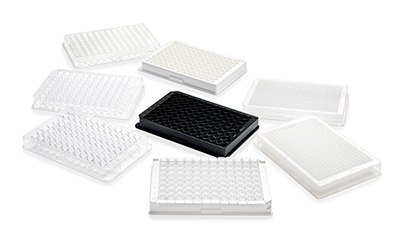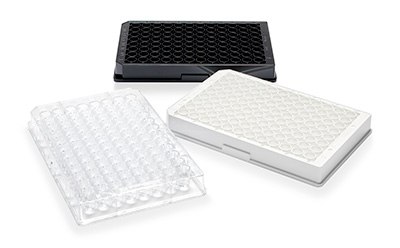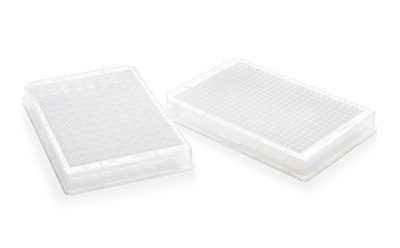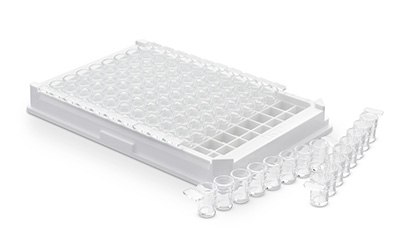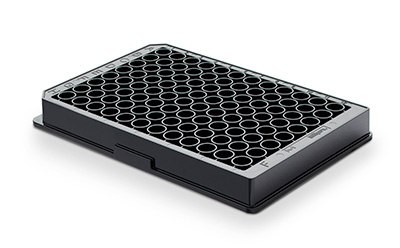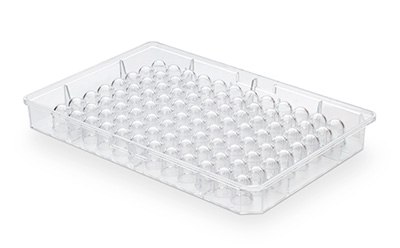MultiScreen® Solid Bottom Plates
MultiScreen® microplates are available as non-sterile, 96-well and 384-well microplates in clear, white, black, or natural. Polystyrene microplates are commonly used for biochemical assays, including colorimetric, luminescent, and fluorescent applications (for example, Bradford-Lowry or luciferase assays) routinely performed on microplate readers. Polypropylene microplates are commonly used for storage of chemicals, nucleic acids, and proteins. These microplates can also be used for colorimetric assays and basic biochemical reactions.
Products
Popular Filters
Products
MultiScreen® Polystyrene Plates
Polystyrene is a highly clear polymer with excellent optical properties which makes it ideal for precise optical measurements. Polystyrene MultiScreen® Microplates are currently available as non-sterile, 96-well microplates in clear, white, or black.
- Clear microplates for absorbance and colorimetric assays
- Black microplates for high signal luminescence assays and fluorescence assays
- White microplates for low signal luminescence assays and TR-FRET assays
MultiScreen® Polypropylene Plates
Polypropylene is characterized by its excellent chemical and thermal stability. It is the ideal polymer for storage microplates. Polar molecules, such as proteins or DNA, bind less to polypropylene than to polystyrene. Polypropylene MultiScreen® Microplates are currently available as non-sterile microplates in natural 96-well and 384-well formats.
- Biologically inert
- Broad chemical compatibility
- High temperature resistance from -196 °C to + 121°C
- V-bottom plates have conically tapered wells for better sample recovery
- U-bottom plates have wells without sharp corners for better suspension
MultiScreen® ELISA Plates
Enzyme-Linked Immunosorbent Assay (ELISA) is a plate-based assay technique designed for detecting and quantifying soluble substances such as peptides, proteins, antibodies, and hormones. MultiScreen® ELISA Microplates are made of polystyrene and available in 96-well or 8-well strip formats. 8-well strip formats allow for single columns “strips” of wells to be used in an assay rather than consuming the entire microplate. These are available with medium or high binding surfaces to best suit the needs of the application and molecules involved.
- High-binding plates have a polystyrene surface that has been specifically treated to provide a hydrophilic surface for increased protein binding
- Medium-binding plates have a less hydrophilic polystyrene surface, and are therefore more suitable for coating non-polar proteins and peptides
Related Resources
- Flyer: MultiScreen® Microplates
The right microplate can improve data consistency and signal-to-noise, help conserve reagent and samples, and save time and cost.
- Brochure: MultiScreen®/Millicell® Plates
This guide for pharmaceutical development, discovery research, molecular biology and sample preparation includes products for screening and cell culture.
To continue reading please sign in or create an account.
Don't Have An Account?